
Shikoku Island: Japan's Hidden Jewel
Discover Shikoku Island, Japan's serene escape, where ancient temples, lush landscapes, and coastal beauty create an unforgettable journey.
Shikoku Island is a treasure trove of natural beauty and rich history. Nestled in the southwestern part of Japan, it is the smallest of the four main islands but boasts a unique charm. From serene temples to lush green mountains, Shikoku offers a peaceful retreat from the bustling cities of Japan. One of the island's most famous attractions is the Shikoku Pilgrimage, a 1,200-kilometer route that connects 88 temples. This pilgrimage is a spiritual journey that has been undertaken for centuries. Along the way, pilgrims and tourists alike can experience the tranquility of rural Japan and the hospitality of its people. In addition to its religious significance, Shikoku is known for its stunning natural landscapes. The island is home to the Iya Valley, a secluded area filled with dramatic gorges and vine bridges, perfect for adventure seekers. The Naoshima Island, part of Shikoku's Kagawa Prefecture, is an art lover's paradise with its contemporary museums and installations. The island also offers beautiful coastal views and pristine beaches, ideal for relaxation and water activities.
Local tips in Shikoku Island
- Try local delicacies such as Sanuki Udon in Kagawa and Bonito Tataki in Kochi.
- Rent a car for easier access to remote areas and to fully explore the island.
- Visit during spring or autumn for the most pleasant weather and to see cherry blossoms or fall foliage.
- Carry cash, as many rural areas and smaller establishments might not accept credit cards.
Shikoku Island: Japan's Hidden Jewel
Shikoku Island is a treasure trove of natural beauty and rich history. Nestled in the southwestern part of Japan, it is the smallest of the four main islands but boasts a unique charm. From serene temples to lush green mountains, Shikoku offers a peaceful retreat from the bustling cities of Japan. One of the island's most famous attractions is the Shikoku Pilgrimage, a 1,200-kilometer route that connects 88 temples. This pilgrimage is a spiritual journey that has been undertaken for centuries. Along the way, pilgrims and tourists alike can experience the tranquility of rural Japan and the hospitality of its people. In addition to its religious significance, Shikoku is known for its stunning natural landscapes. The island is home to the Iya Valley, a secluded area filled with dramatic gorges and vine bridges, perfect for adventure seekers. The Naoshima Island, part of Shikoku's Kagawa Prefecture, is an art lover's paradise with its contemporary museums and installations. The island also offers beautiful coastal views and pristine beaches, ideal for relaxation and water activities.
When is the best time to go to Shikoku Island?
Iconic landmarks you can’t miss
Otsuka Museum of Art
Explore the Otsuka Museum of Art in Naruto, Japan, a unique destination featuring stunning ceramic reproductions of world-famous masterpieces.

Ritsurin Garden
Discover the serene beauty of Ritsurin Garden in Takamatsu, a stunning landscape garden showcasing Japan's horticultural artistry and seasonal charm.

金刀比羅宮
Explore the serene beauty of Kotohira Shrine, a historical Shinto sanctuary dedicated to maritime safety nestled in the lush landscapes of Kagawa, Japan.

Kochi Castle
Discover Kochi Castle, a stunning historical landmark and museum in Japan, offering breathtaking views and a journey through the country's feudal past.

Tokushima Prefectural Uzu-no-Michi Walkway
Experience the natural beauty and cultural heritage of Uzu-no-Michi Walkway in Naruto, Tokushima, a must-visit scenic spot for all travelers.
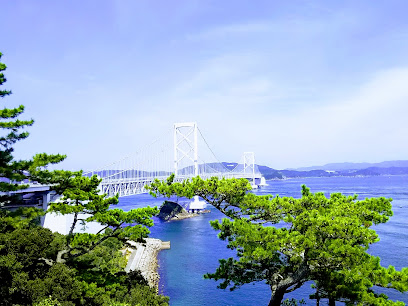
Vine Bridge in the Iya Valley
Discover the breathtaking Vine Bridge in Iya Valley, Tokushima - a stunning blend of nature, history, and adventure in Japan's beautiful countryside.

Bizan Ropeway
Experience breathtaking aerial views of Tokushima from the Bizan Ropeway, a stunning mountain cable car adventure in Japan.

Shikoku Village
Discover the rich history and stunning beauty of Shikoku Village, an open-air museum showcasing Japan's cultural heritage amidst picturesque landscapes.

Umpenji Temple
Experience the tranquility and cultural richness of Umpenji Temple, a key stop on the Shikoku Henro pilgrimage in beautiful Tokushima, Japan.

Naruto Whirlpools
Experience the breathtaking Naruto Whirlpools, a stunning natural phenomenon in Tokushima, Japan, where powerful tides create mesmerizing swirling waters.

Shikoku Automobile Museum
Explore the rich automotive heritage at Shikoku Automobile Museum, a premier destination for car enthusiasts in Kochi, Japan.

Shōryūji Temple
Discover the serene beauty of Shōryūji Temple in Kochi, a tranquil Buddhist temple immersed in nature's splendor.

Oku-Iya Double Vine Bridge
Experience the breathtaking beauty and cultural heritage of the Oku-Iya Double Vine Bridge in Tokushima, Japan.

Ōboke Gorge
Discover the breathtaking beauty of Ōboke Gorge, a scenic paradise in Tokushima, perfect for outdoor adventures and nature exploration.

Heike Yashiki Museum of Folklore
Discover the rich tapestry of the Heike clan's history at the Heike Yashiki Museum of Folklore in Tokushima, an engaging journey into Japan's cultural heritage.

Unmissable attractions to see
Matsuyama Castle
Experience Matsuyama Castle, a historical marvel in Japan, offering stunning views, rich history, and beautiful gardens, perfect for every traveler.

Dogo Onsen Main Building
Discover the healing waters and rich history of Dogo Onsen Main Building, a cultural treasure in Matsuyama, Japan.
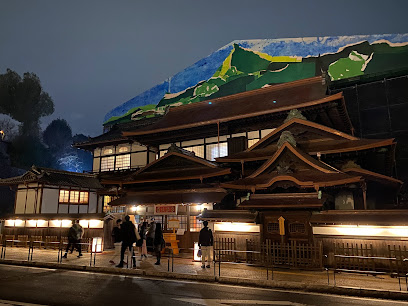
金刀比羅宮
Discover the spiritual essence of Japan at Konpira Shrine, a revered Shinto sanctuary offering breathtaking views and rich cultural heritage.

Tokushima Prefectural Uzu-no-Michi Walkway
Experience the stunning beauty of the Uzu-no-Michi Walkway, a scenic path offering breathtaking views of Naruto's famous whirlpools and serene coastal landscapes.

Kurushima Strait Observatory
Discover stunning views of Kurushima Strait at the observatory, a perfect spot for nature lovers and photographers in Imabari, Ehime Prefecture.

Shikoku Karst
Experience the breathtaking beauty of Shikoku Karst, a stunning natural attraction in Ehime, Japan, perfect for hiking and scenic views.

Kami City Takashi Yanase Memorial Hall & Anpanman Museum
Explore the enchanting world of Anpanman at the Takashi Yanase Memorial Hall & Museum in Kami City, a delightful blend of art, nostalgia, and family fun.

Ioki Cave
Explore the breathtaking Ioki Cave in Aki, Kochi, where stunning geological formations meet fascinating local folklore, creating an unforgettable experience.
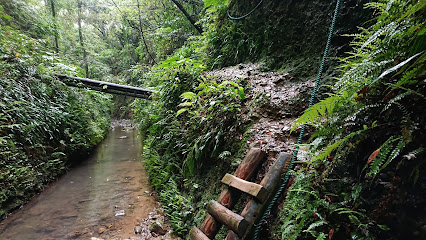
Naruto Whirlpools
Experience the breathtaking power of nature at the Naruto Whirlpools, a stunning tidal phenomenon in Tokushima, Japan, offering unforgettable views and boat tours.

Shikoku Automobile Museum
Explore the Shikoku Automobile Museum in Kochi – a treasure trove of automotive history showcasing vintage and modern vehicles.

Dainichi Temple
Discover tranquility at Dainichi Temple, a stunning Buddhist temple in Kochi, surrounded by serene gardens and rich cultural heritage.

創造広場アクトランド
Explore the magic of creativity and education at Creation Park, a unique blend of a theme park and museum in the heart of Konan, Kochi.
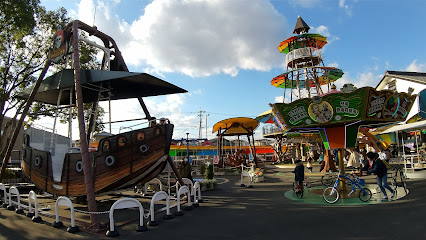
Aji Ryuozan Park
Discover the tranquility of Aji Ryuozan Park in Takamatsu, where lush landscapes and serene views create the perfect escape for travelers seeking natural beauty.

Oko Castle Ruins
Discover the captivating Oko Castle Ruins in Nankoku, a stunning blend of history and nature in the heart of Japan.
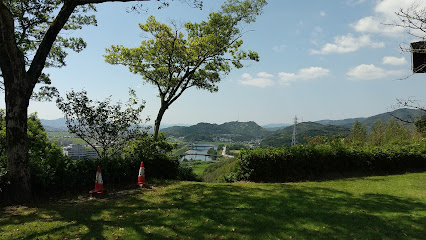
Hinoji Valley - Iya River Bend Observation Point
Experience the serene beauty of Hinoji Valley - Iya River Bend Observation Point, where nature's splendor meets tranquility in Tokushima, Japan.

Essential places to dine
Dining Room Hibari
Discover authentic Japanese flavors at Dining Room Hibari in Otoyo - home to the best katsudon experience!

うなぎ処福
Discover authentic Japanese cuisine at Unagi Doko Fuku - home to exquisite grilled eel dishes in Nankoku, Kochi.

Yuzuan Restaurant
Discover the essence of Kochi through authentic Japanese dishes at Yuzuan Restaurant—where every meal tells a story.

Joyfull Kochi Otsu Shop
Enjoy a diverse menu at Joyfull Kochi Otsu Shop, where family-friendly dining meets affordable prices in the heart of Kochi.

オーベルジュ 土佐山
Discover serenity at Auberge Tosayama - where traditional Japanese hospitality meets exquisite Kaiseki dining amidst stunning landscapes.

カフェレスト 風良里(ふらり)
Experience the fusion of Japanese flavors and Western cuisine at Café Rest 風良里 in Nankoku - a must-visit for culinary enthusiasts.

韓国料理とキムチの店 景福宮(キョンボックン)南国本店
Experience authentic Korean cuisine at Kyonboku in Nankoku, where homemade kimchi and traditional dishes create unforgettable flavors.

Hattorikun
Experience authentic Italian flavors at Hattorikun in Nankoku – where Italy meets Japan in every delicious bite.

Restaurant Obokekyo Mannaka
Experience authentic Japanese cuisine at Restaurant Obokekyo Mannaka in Miyoshi - a hidden gem offering traditional dishes in a cozy setting.

Munagin
Experience the authentic taste of Japan at Munagin - a premier destination for unagi lovers in Nankoku.
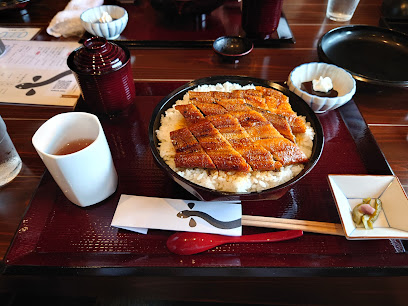
Tataki Kobo
Discover authentic flavors at Tataki Kobo in Kochi—a must-visit Japanese regional restaurant showcasing local culinary delights.

Ombelico
Discover Ombelico in Tosa: where authentic Italian cuisine meets Japanese hospitality for an unforgettable dining experience.

ビスタリ食堂
Experience authentic Japanese dining at Bistari Shokudo in Nankoku - where tradition meets flavor in every dish.

Amekaze Shokudo
Discover authentic Japanese cuisine at Amekaze Shokudo, where delightful dishes meet stunning views of rice fields in Nankoku.

Tosa Rokkon
Experience authentic Japanese cuisine at Tosa Rokkon in Kami, Kochi - where tradition meets flavor in every dish.

Markets, malls and hidden boutiques
AEON MALL AYAGAWA
Discover shopping bliss at AEON Mall Ayagawa, where local charm meets modern retail in Kagawa, Japan.

AEON MALL Kochi
Discover the vibrant shopping experience at AEON MALL Kochi, featuring top brands, delicious dining, and exciting entertainment options.

youme Town Tokushima
Explore Youme Town Tokushima, a vibrant shopping mall offering a mix of retail, dining, and entertainment in the heart of Aizumi, Tokushima.

TSUTAYA Nankokuten
Explore the captivating world of magazines and comics at TSUTAYA Nankokuten, a must-visit destination in Nankoku, Kochi for all literature lovers.

Shikoku Shop 88
Explore Shikoku Shop 88 for unique souvenirs and local delicacies that embody the spirit of Takamatsu and the Shikoku region.

Sunshine
Discover the heart of Kochi at Sunshine Supermarket, where local flavors and convenience come together for an unforgettable shopping experience.

Takamatsu Central Shopping Street
Explore the lively Takamatsu Central Shopping Street for a rich blend of shopping, dining, and local culture in the heart of Kagawa.

Island Mishima
Discover the vibrant shopping experience at Island Mishima, where local culture meets modern retail in the heart of Ehime.

BAKE SHOP HIJIRI
Discover the exquisite flavors of Japanese pastries at Bake Shop Hijiri in Kami, Kochi, where every bite is a moment of bliss.

Suehiro Shopping Center
Discover the vibrant shopping scene at Suehiro Shopping Center, where local charm meets a diverse range of shops and amenities in Tosa.

Minami-Shinmachi Shopping Street
Minami-Shinmachi Shopping Street: A vibrant shopping destination in Takamatsu with local boutiques, delicious dining, and cultural experiences.

Boke Mart
Discover Boke Mart in Miyoshi, Tokushima - your ultimate supermarket for local flavors and convenience during your travels.
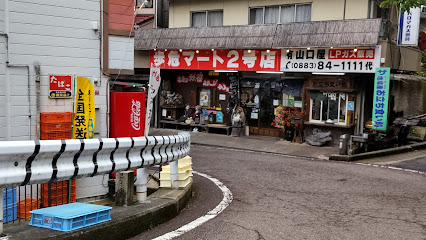
Suehiro Otoyo
Explore authentic Japanese flavors at Suehiro Otoyo, a charming grocery store in Kochi offering fresh produce and unique local snacks.

DAISO
Discover the magic of affordable shopping at DAISO in Nankoku, where unique Japanese products meet unbeatable prices.

Ocho (オーチョ)
Discover Ocho, a quaint cafe in Kochi perfect for relaxation, local delicacies, and a refreshing atmosphere amidst outdoor adventures.

Essential bars & hidden hideouts
Irish Pub Amontillado
Discover the charm of Irish Pub Amontillado in Kochi, where traditional izakaya meets the warmth of Irish hospitality, offering a unique dining experience.

Bar Kohno
Discover the vibrant nightlife of Tokushima at Bar Kohno, where excellent drinks and a welcoming atmosphere await.

K’s BAR
Experience the vibrant nightlife of Kochi at K's Bar, where flavorful drinks and a friendly atmosphere await you.

tone dining bar
Discover the vibrant atmosphere and affordable drinks at Tone Dining Bar in Kochi, a perfect spot for unwinding and socializing with locals.

蔵の和BARフクワウチ
Discover the cozy charm of Kuranowa Bar Fukuwauchi, where local flavors and friendly vibes create the perfect nightlife experience in Kochi.
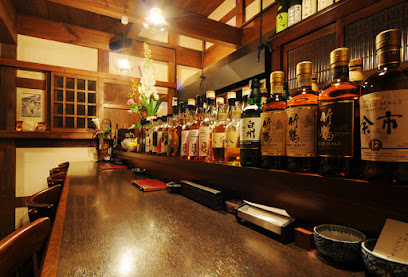
Bar
Experience the vibrant nightlife of Kochi at Selfish Bar, where affordable drinks and a welcoming atmosphere await.

Beer Wine and Ate Mangetsu
Experience the vibrant nightlife at Beer Wine and Ate Mangetsu, a cozy bar in Kochi offering a diverse selection of drinks and local flavors.

Bar Salvador
Discover Bar Salvador in Kochi: A charming bar with a vibrant atmosphere and delightful drinks, perfect for unwinding after a day of exploration.

Beyond
Experience the vibrant nightlife of Kochi at Beyond, where innovative cocktails and a lively atmosphere await every visitor.

BAR クラップス
Experience the vibrant nightlife of Kochi at BAR クラップス, where friendly service meets an extensive drink menu in a cozy setting.

bar 樹香
Experience the warmth of Japanese hospitality and savor unique cocktails at Bar 樹香 in Kochi, a hidden gem in Japan's vibrant nightlife.

BAR 緑波
Experience the vibrant nightlife of Kochi at BAR 緑波, where unique cocktails and a friendly atmosphere await.
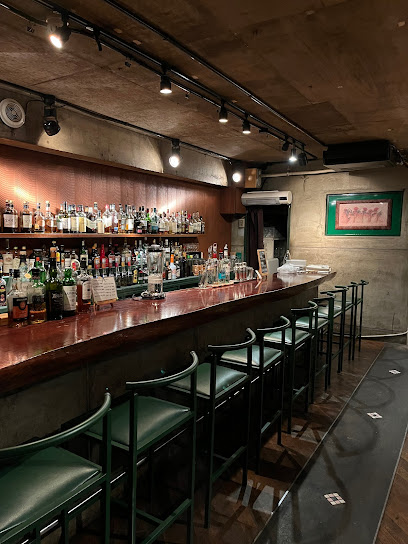
BAR TAKE
Immerse yourself in Kochi's nightlife at Bar Take, where exquisite drinks and a vibrant atmosphere await every visitor.

サムシング・クール
Discover the lively nightlife at サムシング・クール, Kochi's premier bar with exquisite drinks and vibrant entertainment for every visitor.
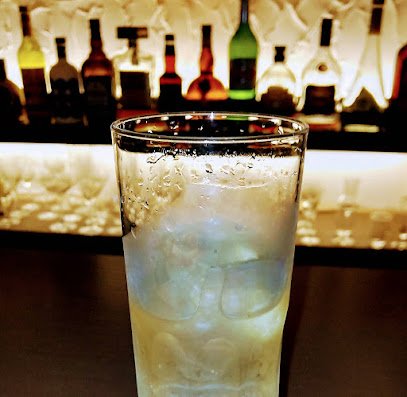
BAR OOKUNI
Experience the lively nightlife at Bar Ookuni, Kochi's favorite bar for local drinks and vibrant social atmosphere.
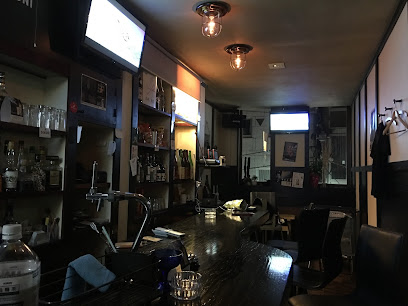
Local Phrases about Shikoku Island
-
- Helloこんにちは
[konnichiwa] - Goodbyeさようなら
[sayonara] - Yesはい
[hai] - Noいいえ
[iie] - Please/You're welcomeどうぞ
[douzo] - Thank youありがとう
[arigatou] - Excuse me/Sorryすみません
[sumimasen] - How are you?お元気ですか?
[ogenki desu ka?] - Fine. And you?元気です。あなたは?
[genki desu. anata wa?] - Do you speak English?英語を話せますか?
[eigo o hanasemasu ka?] - I don't understandわかりません
[wakarimasen]
- Helloこんにちは
-
- I'd like to see the menu, pleaseメニューを見せてください
[menyuu o misete kudasai] - I don't eat meat私は肉を食べません
[watashi wa niku o tabemasen] - Cheers!乾杯!
[kanpai!] - I would like to pay, pleaseお会計をお願いします
[okaikei o onegaishimasu]
- I'd like to see the menu, pleaseメニューを見せてください
-
- Help!助けて!
[tasukete!] - Go away!行ってください!
[itte kudasai!] - Call the Police!警察を呼んでください!
[keisatsu o yonde kudasai!] - Call a doctor!医者を呼んでください!
[isha o yonde kudasai!] - I'm lost道に迷っています
[michi ni mayotte imasu] - I'm ill具合が悪いです
[guai ga warui desu]
- Help!助けて!
-
- I'd like to buy......を買いたいです
[... o kaitai desu] - I'm just looking見ているだけです
[mite iru dake desu] - How much is it?いくらですか?
[ikura desu ka?] - That's too expensiveそれは高すぎます
[sore wa takasugimasu] - Can you lower the price?値段を下げてもらえますか?
[nedan o sagetemoraemasu ka?]
- I'd like to buy......を買いたいです
-
- What time is it?今何時ですか?
[ima nanji desu ka?] - It's one o'clock一時です
[ichiji desu] - Half past (10)十時半
[juuji han] - Morning朝
[asa] - Afternoon午後
[gogo] - Evening夕方
[yuugata] - Yesterday昨日
[kinou] - Today今日
[kyou] - Tomorrow明日
[ashita] - 1一
[ichi] - 2二
[ni] - 3三
[san] - 4四
[shi] - 5五
[go] - 6六
[roku] - 7七
[shichi] - 8八
[hachi] - 9九
[kyuu] - 10十
[juu]
- What time is it?今何時ですか?
-
- Where's a/the...?…はどこですか?
[... wa doko desu ka?] - What's the address?住所は何ですか?
[juusho wa nan desu ka?] - Can you show me (on the map)?地図で見せてもらえますか?
[chizu de misetemoraemasu ka?] - When's the next (bus)?次の(バス)はいつですか?
[tsugi no (basu) wa itsu desu ka?] - A ticket (to ....)(…)までの切符をください
[(...) made no kippu o kudasai]
- Where's a/the...?…はどこですか?
History of Shikoku Island
-
Shikoku Island, one of the four main islands of Japan, has a rich tapestry of history that intertwines with Japanese mythology. According to legend, the island was created by the gods Izanagi and Izanami. Shikoku, which means 'four provinces,' was historically divided into Awa, Tosa, Sanuki, and Iyo provinces. These regions have each contributed to the island's unique cultural mosaic.
-
The Shikoku Pilgrimage, known as 'Shikoku Henro,' is a significant spiritual journey that draws thousands of pilgrims annually. This 1,200-kilometer circuit visits 88 temples associated with the Buddhist monk Kūkai, also known as Kōbō Daishi, who was born in Zentsūji, Kagawa Prefecture. The pilgrimage is both a physical and spiritual undertaking, reflecting the deep-rooted religious traditions of the island.
-
During the Sengoku period (1467-1603), Shikoku was a battleground for various samurai clans. The Chōsokabe clan, under the leadership of Chōsokabe Motochika, emerged as a dominant force by unifying the island. Motochika's rule was marked by significant agricultural reforms and the construction of castles, which left a lasting impact on the region's development.
-
The Battle of Sekigahara in 1600 was a pivotal event in Japanese history that led to the establishment of the Tokugawa shogunate. Shikoku's daimyo, including those from the Chōsokabe and Kōno clans, were significantly affected by the outcome. The redistribution of lands and power under Tokugawa Ieyasu reshaped the political landscape of Shikoku, leading to a period of relative peace and stability known as the Edo period.
-
Shikoku is renowned for its traditional arts and crafts, including Awa Odori, one of Japan's largest and most famous dance festivals held in Tokushima. The island is also known for its production of high-quality indigo dye, known as 'Awa Ai,' and traditional paper making in Ehime Prefecture. These cultural practices highlight the island's rich artistic heritage.
-
In the modern era, Shikoku has undergone significant development while preserving its cultural heritage. The construction of the Seto Ohashi Bridge in 1988, which connects Shikoku to Honshu, marked a new chapter in the island's accessibility and economic growth. Today, Shikoku is celebrated for its blend of modernity and tradition, attracting visitors with its historical sites, natural beauty, and cultural festivals.
Shikoku Island Essentials
-
Shikoku Island can be accessed by several means. The most common way is via air, landing at Takamatsu, Matsuyama, Kochi, or Tokushima airports. These airports have connections to major cities like Tokyo, Osaka, and Fukuoka. Alternatively, you can take a train from the mainland via the Seto-Ohashi Bridge, which connects Okayama to Takamatsu. Ferries are also available from ports such as Hiroshima, Kobe, and Osaka, offering a scenic route to Shikoku.
-
Shikoku has an extensive public transportation network. JR Shikoku operates the main train lines, making it easy to travel between cities. Local buses are available in all major cities and towns. For more flexibility, renting a car is a great option, especially for exploring rural areas and scenic routes. Bicycles are also popular and can be rented in many locations for a more immersive experience.
-
The official currency in Japan is the Japanese Yen (JPY). Credit cards are widely accepted in cities, but it's advisable to carry cash, especially in rural areas and smaller establishments. ATMs are plentiful, but not all accept foreign cards, so look for those in convenience stores like 7-Eleven or at post offices. Cash is often preferred for smaller transactions.
-
Shikoku is generally very safe for tourists. Violent crime is rare, and petty crime such as pickpocketing is uncommon. However, it's always good to stay vigilant and keep an eye on your belongings, especially in crowded areas. There are no specific high-crime neighborhoods targeting tourists in Shikoku, but general caution is always recommended.
-
In case of an emergency, dial 110 for police assistance and 119 for ambulance and fire services. Most cities in Shikoku have hospitals and clinics where you can receive medical care. It's advisable to have travel insurance that includes medical coverage. Pharmacies (薬局, yakkyoku) are widely available for minor health issues and over-the-counter medications.
-
Fashion: Do dress modestly, especially when visiting temples and shrines. Avoid wearing overly revealing clothing. Religion: Do show respect at religious sites by bowing slightly and not disturbing worshippers. Removing shoes before entering temples is a must. Public Transport: Do queue up and allow passengers to disembark before boarding. Don't talk loudly or use your phone in the train's quiet zones. Greetings: Do greet people with a slight bow. Handshakes are less common but accepted. Eating & Drinking: Do try local foods and enjoy the culinary diversity. Don't eat or drink while walking, as it is considered impolite.
-
To experience Shikoku like a local, participate in the Shikoku Pilgrimage (Henro), visiting 88 temples across the island. Try local delicacies such as Sanuki Udon in Kagawa, Katsuo no Tataki in Kochi, and Uwajima's Taimeshi. Engage with locals at traditional festivals like the Awa Odori in Tokushima. Don't miss the scenic Iya Valley and the hidden villages. Renting a bicycle for a ride across the Shimanami Kaido is also highly recommended.
Trending Landmarks in Shikoku Island
-
Otsuka Museum of Art
-
Ritsurin Garden
-
金刀比羅宮
-
Kochi Castle
-
Tokushima Prefectural Uzu-no-Michi Walkway
-
Vine Bridge in the Iya Valley
-
Bizan Ropeway
-
Shikoku Village
-
Umpenji Temple
-
Naruto Whirlpools
-
Shikoku Automobile Museum
-
Shōryūji Temple
-
Oku-Iya Double Vine Bridge
-
Ōboke Gorge
-
Heike Yashiki Museum of Folklore
Nearby Cities to Shikoku Island
-
Things To Do in Osaka
-
Things To Do in Nara
-
Things To Do in Kyoto
-
Things To Do in Fukuoka
-
Things To Do in Nagoya
-
Things To Do in Kanazawa
-
Things To Do in Busan
-
Things To Do in Ulsan
-
Things To Do in Gyeongju
-
Things To Do in Pohang
-
Things To Do in Daegu
-
Things To Do in Andong
-
Things To Do in Suncheon
-
Things To Do in Tokyo
-
Things To Do in Daejeon













